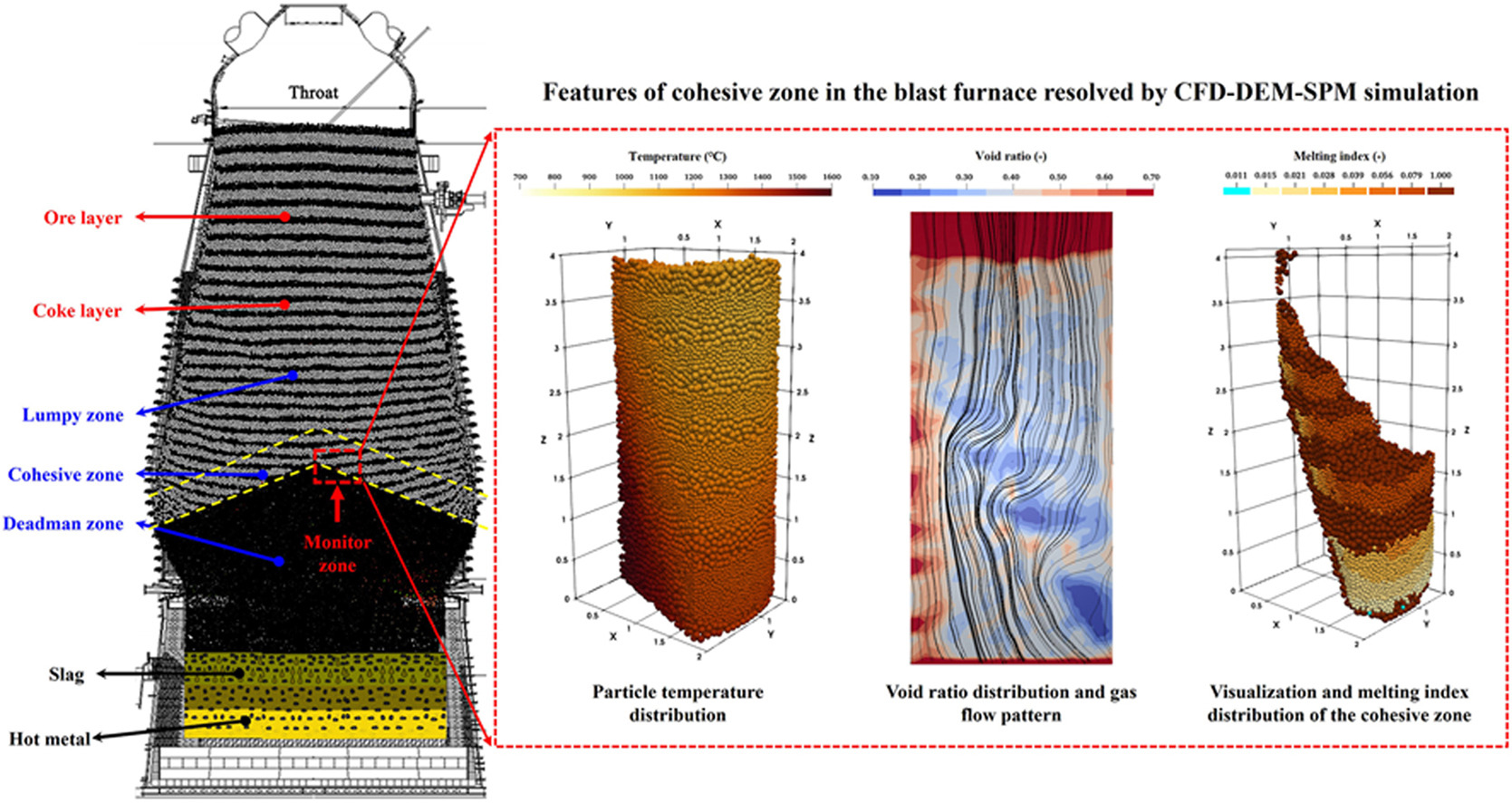• A CFD-DEM-SPM has been established and validated.
• A softening particle model correlates Young's modulus with temperature.
• Cohesive zone characteristics and permeability degradation mechanisms are revealed.
• Effects of innovative low carbon BF technologies on the CZ are discussed.
To reduce greenhouse gas emissions in ironmaking, the steel industry is advancing innovative low-carbon blast furnace (BF) technologies. A critical challenge for implementing such innovations lies in optimizing permeability within the BF's cohesive zone (CZ), which directly impacts operational stability and efficiency. This study employs a coupled computational fluid dynamics-discrete element method (CFD-DEM) to calibrate Young's modulus by respectively fitting the relationship between Young's modulus and temperature, as well as pressure drop, based on a reported lab-scale softening and smelting experimental data of ore-coke heterogeneous alternating layer packed beds resembling BFs, and develops a softening particle model (SPM). The SPM establishes a temperature-dependent relationship between mechanical properties of softened ore particles and CZ conditions in industrial-scale BFs. Simulations of particle shrinkage behavior and pressure drop trends using the CFD-DEM-SPM framework demonstrate strong correlation with experimental data, validating its accuracy for predictive analysis. Furthermore, this study investigates how layer arrangement configurations, size ratios between ore and coke particles, and coke blending proportions influence CZ characteristics. Key findings identify an optimal batch weight configuration to enhance permeability within the CZ while maintaining operational stability. Additionally, results indicate that increasing the relative particle size of ore compared to coke or enhancing the proportion of blended coke in burden mixes improves CZ permeability, offering actionable strategies for reducing carbon intensity in BF operations. These insights provide critical guidance toward developing low-carbon BF processes compatible with global climate targets.

